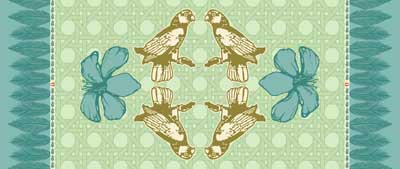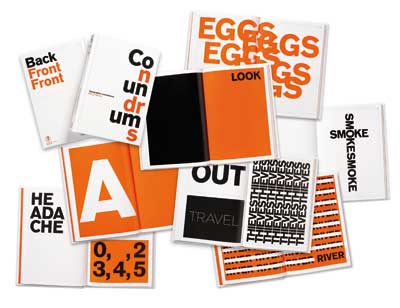The afternoon’s speakers were mostly entertaining and surprising, although the shortage of food at lunchtime led to a lot of delegates ducking out early. Pity, the last speaker was possibly the best of the day.
William Drenttel – ‘Design for social innovation”
A melding of politics, social media and holiday photos, the scope of Drenttel’s talk was a bit too broad, although he did show an interesting example of citizen journalism – the Polling Place Photo Project. On election day in the US, people took photos of themselves at their local voting station and posted these online.
The point was to monitor the election (you know, just in case it wasn’t free and fair), but also to see how Americans experienced the voting process in their hometown. Obviously someone in a West Virginia coal-mining town had a different take on things to someone in Brooklyn NYC. He also briefly mentioned applying design methodology to how healthcare is run, but didn’t go into more detail. I’m not sure even Obama would go for that one.
Wooster Collective & Faith 47 – Street Art
Husband and wife team, Marc and Sarah Schiller, document ‘street art” (we called it ‘culture jamming’ in the 90s) via their popular website woostercollective.com and recently helped the enigmatic Banksy complete his first film. The artists they bring to the public’s attention frequently follow the tradition of ‘adbusting” (think Naomi Klein’s No Logo), but also make graffiti and social commentary.

The ‘guerrilla knitters” knit cosies that cover street signs and other structures. The Repair Manifesto encourages people to fill holes in war-damaged buildings with bright pieces of Lego. A collective in Berlin takes discarded fur coats and reconstitutes them as graffiti animals stuck on walls. The Schillers are passionate about what they do without taking it all too seriously; that’s probably why Banksy trusts them.
Faith 47, a local graffiti artist, was a bit more serious. Her Freedom Charter project took lines from the 1955 document and painted them around the country in places that create contexuality. For example, ‘The people shall share in the country’s wealth” on a wall in Khayelitsha. She says she doesn’t work for money, which came across as a little sententious and made some of us wonder who pays her electricity bill. Still, powerful work.
Marcelo Rosenbaum – Energetic environmental design from Brazil
Although a lot of what he said got lost in translation, Marcelo’s pleasure in his work made even the most botoxed delegate smile. His exquisitely patterned plate ranges are inspired by Brazilian culture, from traditional dance (macaratu) to a marine goddess (Iemanja) to local lace (renda). He uses the flowery pindorama (the original name of Brazil) patterns on plastic tablecloths, which are very popular but were also rather ugly until Marcelo got hold of them. An explanation of the meaning of the patterns is sold with each tablecloth.

In addition to these products, Marcelo has given back to his community by redesigning the interior and exterior of a tiny, cramped house where seven people were living so that they had space, air-flow and a terrace. He also helped a woman in a wheelchair, by transforming her home into a place she could easily access. These were the feel-good stories of the day and delegates looked a little misty-eyed at seeing great design really change lives.
J. Craig Venter – ‘Surprise! It’s a genome.”
An unscheduled speaker via video feed, Craig Venter frightened, confused and fascinated everyone at Design Indaba. His team successfully sequenced the human genome (his in fact) and his company, Synthetic Genomics, is now exploring ways of, yes, synthesising genomes. They have discovered that by transplanting an organism’s genome one can change the species it is planted into. This previously only worked in theory. His company has also successfully cloned genomes in yeast and since organisms replicate themselves, this opens a whole new world in biology.
As Venter eloquently put it, ‘The software of life (DNA) builds its own hardware (i.e. makes a living cell genome).” His aim is to redesign this biological software in order to create a clean fuel source – from algae. It might sound bizarre, but ExxonMobil have invested with him and we all know they don’t part with money unless they really have to.
It was a massive departure from the usual fare, a talk on biological design, but now we know it’s probably a good idea to invest in synthetic biology shares – they’ll be the Microsoft of tomorrow.
Harry Pearce – Conundrums and dreams
Pearce is one of the founders of the famous London and New York-based design firm Pentagram. He sees humour and stories in everything from street signs to his own dreams. His playful and deconstructionist approach to everything, especially language, made him one of the most entertaining and down-to-earth speakers of the day.
His word conundrums, about which there is now a book, taxed the tired delegate brains in a good way. Then there was the design of the London Science Museum’s Dana Centre, which aims to connect science, technology and culture. You can apparently eat great food while watching live brain surgery (I’ve seen people do this with Grey’s Anatomy on Monday nights).

There was an ethereal bent to his talk where he discussed his dreams and how they mean nothing and everything at the same time. It may sound like pretentious, artsy clap-trap, but Pearce was completely guileless and left us all feeling like we’re capable of greatness. He also had the quote of the day, ‘You can feel something without understanding it.”
Even though day one ended late and there were problems with prohibitive parking fees (at R6000 a conference ticket, delegates expect their parking to be free or at least cheap), it was an excellent start to the conference.